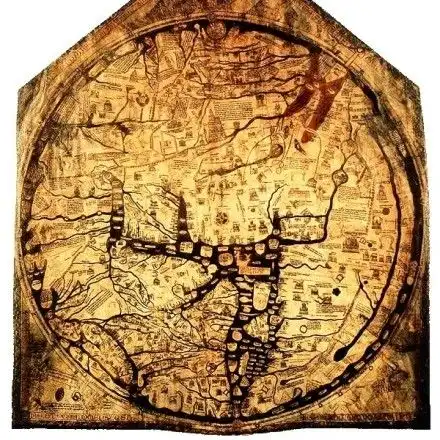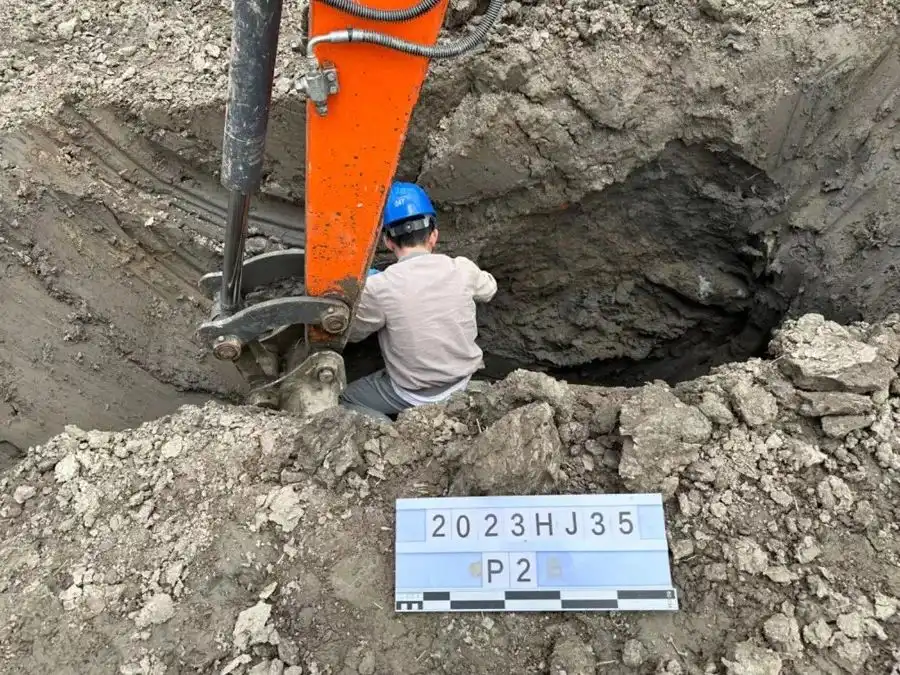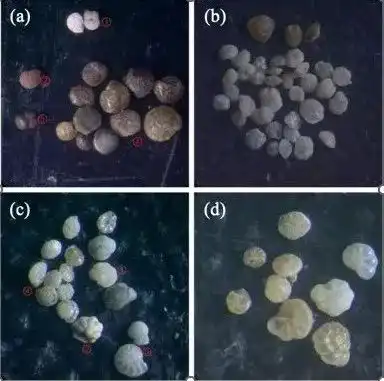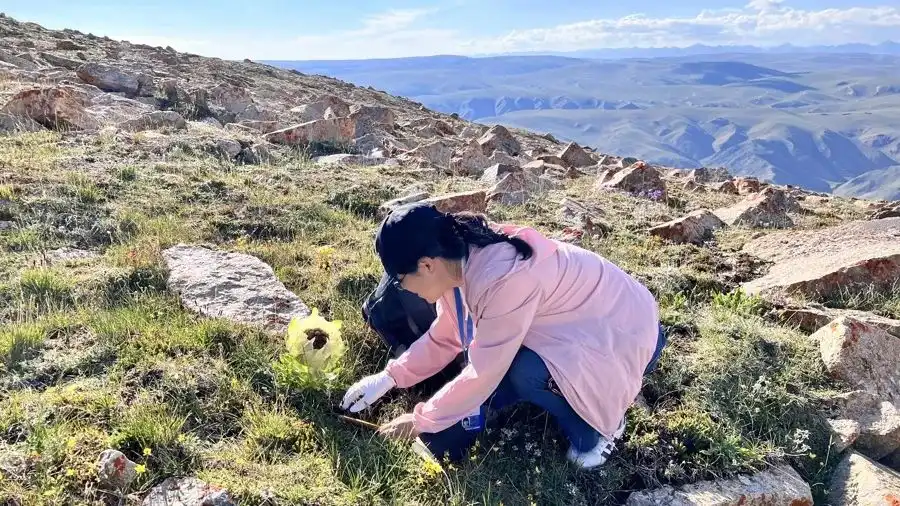Environmental Investigation:Excavate the truth and protect ecological justice
The following article is from the night of the case, written by Rick
 Case Night.
Case Night.
Dark night in the case page, case page in the dark night
suburbs of Shanghai
More than 160 pits have been dug in more than 80 acres of land
Each is about 1.5 square meters
Six to seven meters deep, two to three meters shallow
Several young people were digging in the pit
** **
The excavated soil is classified
and carefully pack and number them
Back to the laboratory at 1347 Guangfu West Road
This is not archeology.
but在做环境损害司法鉴定** **
"In addition to digging garbage, we also have to soak in the mud. We can go up to the plateau and down to the sea. It can be said that we go up to the sky and into the earth." Ma Dong laughed as he said this. He is the person in charge of the Environmental Damage Judicial Expertise Research Office of the Institute of Judicial Expertise (referred to as the "Environmental Office of the Institute of Judicial Expertise"). Guo Xueyan, a judicial expert on the side, took over:"We studied the environment and were prepared to dig garbage long ago, but we never thought of solving cases before, and sometimes we had to appear in court."
Sijian Institute has a history of more than 90 years. The traditional "three categories" of identification-forensic medicine, physical evidence, and audio-visual data have established its status as a "national team". In contrast, the Environmental Damage Judicial Identification Department established in 2019 is very "young". But in the past five years, the various appraisals they have conducted have covered all seven categories of fields, covering 11 provinces. At present, there are 47 people in the team, and more than 55% have a doctoral degree or above. Ma Dong and five young people are mainly responsible for daily work.
What they are doing is to trace the source to identify the environmental damage, provide evidence for conviction, and provide the most suitable repair plan ——非法填埋建筑垃圾,究竟造成了多大危害?耗资数十亿的项目非法采砂填岛,怎样破坏了周围的水域环境?偷盗天山雪莲、中华鲟甚至黑土地,给生态系统带来了哪些难以修复的损伤?
The environment cannot speak, and living things cannot speak. They must loudly "seek justice" for them.
The earth does not speak, but also runs around for it
** **
Guo Xueyan turned out her mobile phone video:In the middle of a large swamp, she was wearing rubber rain pants, half of her body buried in it, and struggled to move forward. The camera turned and saw a black piece of mud moving under the tree. It was actually a crayfish covered in cement. "It's climbing hard, but it just can't move. Cement was stolen from this forest land. Not only was the roots of the plants unable to breathe, but other creatures were also covered with their mouths and noses. They couldn't breathe at all, and they would eventually slowly suffocate."
The environmental room has done a lot of landfill cases of solid waste such as muck, sand, and garbage in recent years, and mud is relatively rare. Guo Xueyan explained:"Trees can still live after landfill solid waste, but mud is different. This kind of mud is generally produced when building tunnels and drilling. It has a lot of suspending agents and surfactants added to it, most of which are alkaline. In addition, it is clay and has poor water permeability. After being stolen into the forest, it will plug the pores in the soil, and the roots of the plants will be wrapped up, and the entire forest will gradually lose its vitality."
This is like a horrific "cement burial case", but the object of the "burial" is 30 acres of forest land.
At the end of November last year, more than a week after the case occurred, the public security officers discovered it. They hurriedly found the environmental room and asked them to help identify the damage and provide a repair plan. This was originally a beautiful forest, filled with camphor trees, metasequoia, and luerudite trees. Because of the rich vegetation, detection methods such as radars and drones are not used, and only the most primitive manual measurement methods can be used. Guo Xueyan said:"During the cold wave in those days, the mud was cold and sticky, and the total amount was huge. The depth was more than one meter and the shallow one was fifty to sixty centimeters. Once, I watched my colleague Xu Guifeng pull his feet and tilt his body. First, his mobile phone fell, then the measuring instrument fell, and finally he himself fell."
Xie Hang smiled sheepishly:"For more than ten days, everyone was in disgrace. They took turns to go in and measure from morning to night, and finally found out the damage." Based on the measured data, they formulated a repair plan-dig out all the mud and cover it with soil again. Guo Xueyan said:"In this case, the possibility of on-site repair is extremely low. Unlike muck soil, the nutrients are not enough, so some organic matter can be added to improve it. This land can no longer be improved and must be extracted."
Even if slag landfill cases are common, appraisers are often scared by the extent of the damage. Ma Dong talked about several very hidden cases he had done before:The construction party and relevant maintenance units have "cooperation". There is a lot of rain during the typhoon season in a certain place. In some low-lying forest lands, they deliberately do not drain the water completely, allowing the trees to drown. Then in the name of transformation, they apply for introduction of greening soil. In fact, they dump muck behind the scenes, often hundreds of thousands of meters.
From the naked eye, the illegally landfilled garbage is obvious, but the muck is difficult to distinguish-it clearly looks exactly like ordinary soil, so why is there a problem? In fact, professionals can tell at a glance that these muck soil is severely hardened and is very different from the planting soil.
Ma Dong explained that the muck is also called foundation pit soil or raw soil. It is dug up from a deep foundation pit dozens of meters. It has a low organic matter content and is not breathable. It is similar to cement. After rain, the water flows away from the surface. It cannot seep down. The upper layer is like paste, and animals and plants cannot survive at all. "In fact, it cannot even be called 'earth'. It is just construction waste and has no use value. But if it is taken to a construction waste disposal point, the cost is very high, so they have to take advantage of the loopholes."
"The small trees growing on this soil are very poor and sickly." Guo Xueyan added that these cases are often investigated after seeing the abnormal growth of plants and pulling out the radish and bringing out the mud, but at this time the harm has already taken shape.
The 80 acres of land mentioned at the beginning is still a water conservation forest, and this situation also occurred. The appraiser had to go down to more than 160 pits one by one and scrape soil layer by layer on the side walls according to the different characteristics of the vertical section. "Using a metal shovel may affect the test results, so we can only use a wooden shovel. However, the soil is very hard, so everyone's hands are covered with blisters."
 鉴定人员在土坑中采集样本
鉴定人员在土坑中采集样本
They once identified a plot of hundreds of acres in a southern city as an agricultural park. The local identification found that there was no pollution, and the local government asked the Sijian Institute to re-identify it. "At the beginning, the person involved in the case came every day, running back and forth, patting his chest and saying that his land was fine. Seeing that we dug more and more holes, he said less and less, and he stopped coming later." Guo Xueyan said that it was already November at that time, but the south was very hot and it was easy to get heatstroke. She was in the pit every day and had to endure the pungent smell."We must dig it all up in accordance with the rules, and the conclusions given can be convincing."
As a Ph. D. in ecology, ecological value estimation is Guo Xueyan's specialty. She described it as similar to traditional Chinese medicine, but they are checking the pulse of the environment and giving prescriptions. When calculating ecosystem losses, direct damage is intuitive. The most difficult part is the valuation of the entire ecosystem loss, but this is also an extremely important part and a reference for the court to impose sentences.
But punishment is not the end after all, and repair has a long way to go. "Injured" land needs enough nutrition and enough patience to recover only by slowly maintaining it.
If the waves are not shocking, the harm should be paid more attention to
** **
Among marine pollution, illegal mining of sea sand is a relatively common type, but how to scientifically assess the damage caused by this behavior has always been a difficult point in handling related cases. The Environmental Room has conducted many such judicial appraisals and accumulated certain experience.
"Sea sand is an important mineral resource. In illegal sand mining cases, we must investigate the source and quantity of sea sand, as well as the scope and objects of environmental damage to the occupied and adjacent sea areas. The first thing we must do is solve the source problem." Judicial appraiser Cheng Kuan said that the composition of sea sand varies according to the location where it is formed, the geological environment of the sea area, the sea sand transportation process and the aquatic environment. Among them are rock and mineral fragments, as well as shells, corals, Foraminifera and other organisms and fossils, as well as heavy minerals such as zircon, tourmaline, and magnetite.
The composition of these components is an important basis for tracing the origin of sea sand. "For example, foraminifera are ancient organisms with many holes on their bodies. They are one of the characteristic indicators of marine sediments and the marine environment. There are different types of foraminifera in different sea sands." Cheng Kuan said that through sea sand mineral composition and particle size analysis, heavy mineral and element analysis, foraminifera analysis and other means, sea sand source information can be traced; sonar mapping can be used to compare changes in seabed topography in detail; through modeling, the overall impact of illegal sand mining activities on the marine ecosystem can be assessed, etc.

In 2022, they went to a certain place to conduct identification of illegal sand mining and island filling. The island is extremely hot in summer, and the soles of your feet are burning and painful when standing on the beach, but land surveys have to be carried out under the scorching sun. To measure the amount of sand and gravel on the seabed, we have to take a speedboat to the sea surface to take samples. Cheng Kuan said,"We stare at the GPS in the waves to find points and drive back and forth. Sometimes after taking samples, the boat floats out. It's so far, we have to reposition. After more than 20 days of investigation on the island, we finally found out the illegally mined sea sand here."
As a Ph. D. in environmental engineering, Cheng Kuan has had a lot of dealings with sea sand in the three years since joining the Environmental Office of the Sijian Institute. Speaking of the damage caused by illegal mining of sea sand, she can list a lot in one go-after emptying the bottom sand, the silt layer will collapse due to gravity, causing the burial of benthos at the sand mining site; Illegal sand mining is often disorderly and random, and sand pits are scattered. During the process of back silting, it will erode the nearby seabed and affect the stability of adjacent shoreline; In addition, sand mining changes the original habitat of aquatic organisms, which will have a certain impact on aquatic animals and plants, and also threaten the safety of aquatic ecosystems.
Although in the eyes of ecologists, sand and gravel are the "stabilizer" of river beds and the home of aquatic life. But in the eyes of illegal sand miners, every grain of sand is money. Mining sand overnight can sometimes make tens of thousands of dollars.
In 2019, in Shanghai's first case of illegal sand mining causing ecological and environmental damage, criminal suspects accumulated more than 10,000 cubic meters of illegal sand mining downstream of the Yangtze River Bridge. During the appraisal, the Sijianyuan team used a model to calculate the scope of the affected environment and found that in addition to the ecosystem, this behavior also affected river stability and navigation safety, and may even affect the bridge foundation. These losses must be quantified., as the basis for penalty.
Destruction is easy, but marine ecological restoration is complex. When formulating a restoration plan, the environmental damage judicial appraiser needs to set specific restoration goals including restoring specific biological communities and improving water quality based on specific conditions such as topography, damage to biological communities, and changes in water quality.
Not only the sea, but also the waters around it often lack peace. Last summer, the Ecological Environment Bureau in the suburbs of Shanghai received a report that a river in a certain farm had a serious odor and a large number of surrounding vegetation died. It was suspected that illegal sewage from a chemical plant had caused river pollution, and hoped that the Sijian Institute would identify the pollutants and pollution sources.
"When we went to the scene to take samples, the water we poured in was white and tasted very stimulating. It was really 'spicy' for the eyes, and the pollution was very serious visible to the naked eye. We need to identify pollutants, pollution scope, and pollution sources as soon as possible." Cheng Kuan said that what is special about this case is that this pollutant is not a conventional pollutant. They tried many testing methods before finally locking in a toxic volatile organic compound.
However, the chemical composition of pollutants in the environment is complex. After pollutants enter the environment, they undergo dilution, mixing, degradation and weathering. The composition and initial sewage discharge are already very different. It is also technically difficult to determine the source. Through sampling points and model calculations, they solved this problem, but a new problem came again-this substance is not in the standard. What is the concentration to determine that it poses environmental risks? In the end, they used the field survey results to compare pollution indicators, and after comprehensive calculation, they gave environmental risk values and determined the final goal to be repaired.
Everything speaks no words, but we must work hard to help them seek justice.
Last year, police officers from a certain place in southwest China sent several dead fish from afar. In a fish pond contracted by local farmers, thousands of salmon were turned over overnight. The local area could not find out the reason. After traveling to several places, they came to Sijian Hospital. "Salmon has a particularly high fat content. High concentrations of oil will clog the machine and make the signal inaccurate. We have thought of many ways to separate the components. Later, alpha polyester, the main component of a pesticide, was detected in fish bodies and water in fish ponds." Xu Guifeng, who participated in the appraisal, introduced.
Based on the drug concentration in the upstream and downstream water and bifurcated river sections, the police restored the case.:Some people often go to this fish pond to fish. After being chased away by the owner, they secretly poison them in the upstream river in retaliation.
Sometimes conflicts between humans are reported to other creatures, but sometimes they are just victims of human activities.
"Someone must have poisoned my fish pond!" In 2019, Lao Wu, a villager in the suburbs of Shanghai, looked at a pond of dead fish and was so anxious that his mouth bubbled and immediately called the police. The police entrusted Si Jianyuan to identify the water quality of the pond and dead fish. At that time, Ma Dong took over the case and quickly detected organic compounds and compounds including ammonia nitrogen, phosphorus and nitrogen."These are all caused by construction waste, domestic garbage, etc. Typical chemical substances produced by pollutants. We judged that these fish may have died of water pollution, and it is very likely that there was landfill garbage around the fish pond."
Then, Ma Dong discovered clues in two satellite photos:Photos from 2016 showed two square ponds not far from the west of the village, but in the 2017 photo, the two ponds disappeared. They speculated that the garbage was most likely buried in the original two abandoned ponds. After many years, the pond was covered with vegetation. After scanning the filling area with "geophysical radar", they found that objects were indeed buried 4-9 meters deep underground, occupying almost all of the two ponds. area.
After modeling, it can be roughly estimated that its volume is about 28,000 cubic meters. Ma Dong said:"We first carried out small-scale excavation and found plastic, woven bags, fabrics, glass bottles, steel bars and other domestic waste and construction waste under the soil layer, which also exuded a stench." Based on the appraisal conclusion, the public security and environmental law enforcement departments made a penalty decision. In addition to being required to remove garbage and restore the ecology, the parties involved were also investigated for corresponding criminal responsibilities and huge social restoration costs.
Sometimes, sacrificing animals and plants seems to be a matter of course for the benefit of people.
Last year, someone stole tens of thousands of Tianshan Snow Lotus plants, and Guo Xueyan went to identify the extent of ecological damage. On a mountain at an altitude of more than 4000 meters, she rode a horse and traveled across mountains and rivers for investigation with staff from the local procuratorate and forestry bureau. "The perpetrator himself was a big cattle farmer and was very rich, but he was still greedy. He repeatedly stole snow lotus and cleaned up the entire mountain. This is also the first time I have seen a snow lotus. It is white and small. It grows on such a steep place, and it has such an ill-fated fate. It's really heartbreaking."
 鉴定人员在高山上勘察
鉴定人员在高山上勘察
On the eve of the implementation of the "ten-year fishing ban" in the Yangtze River in 2020, illegal fishing remains rampant. People in the Chongming Dongtan Bird Nature Reserve catch aquatic products by using electric fishing, and set up deep water nets in the Jiuduansha Wetland to catch anchovies and white rice shrimps. There are also people driving small boats many times, using electric pulse methods and triple nets to illegally catch aquatic products in the Yangtze River Estuary Chinese Sturgeon Nature Reserve.
Among his catches were silver carp, some perch, and a suspected Chinese sturgeon. In order to determine the species of this fish, the Environmental Laboratory and the Forensic Physical Evidence Research Laboratory worked together to conduct species identification using dual demonstration methods such as appearance, morphological characteristics and DNA technology. After it was determined that it was a Chinese sturgeon, pectoral fin sampling and slicing annual ring inspection were carried out in accordance with relevant standards, and it was comprehensively identified as a wild Chinese sturgeon juvenile.
Talking about these cases, Guo Xueyan said seriously:"Whether it is fishing with electricity or netting, the Chinese sturgeon or other biological resources are caught, the damage and impact on the ecological environment are different, and the way ecological restoration work is carried out is also different. In the process of judicial appraisal, these must be calculated one by one." She explained that analyzing the impact of illegal fishing and picking must be systematic and comprehensive. In addition to considering the direct loss of biological resources, it must also include the damage caused to other organisms in the food chain. As the evaluation system becomes more refined and scientific, every link in the chain of damage can be taken into account.
Unlike other types of judicial identification, environmental damage identification seems to require more "miscellaneous"-to investigate the entire incident clearly, you need not only to investigate like a sociologist, but also to cooperate with multiple disciplines such as ecology, environmental science, analytical chemistry, hydrogeology, satellite remote sensing, and animal, animal, sound and electricity. This is a huge systematic project that requires a strong professional team.
In 2019, at the beginning of the establishment of the Environmental Office, Sijian Institute signed a cooperation framework agreement with the Information Center of the Supreme People's Procuratorate, becoming one of the 58 appraisal agencies that "identify first and then pay" in procuratorial public interest litigation. The environmental room, which is guided by the principles of "protecting the youth and protecting the greenery, abiding by integrity and innovation, benefiting the public, and enforcing lessons for the people", currently undertakes more than 95% of cases that are identified first and then paid, and actively promotes the establishment of cooperation with public security laws and governments in many places. Strategic cooperation, improve counterpart assistance mechanisms, and fully support case handling needs.
The environment is priceless, and making quick money by destroying the natural environment is tantamount to tying yourself in a cocoon. But this green area is always guarded by someone. The background picture of the Environmental Room Working Group is a large stone at the entrance of Sijian Hospital, with the words "Defend Justice with Science" written on it. For them, science can also speak up for the environment.
**
